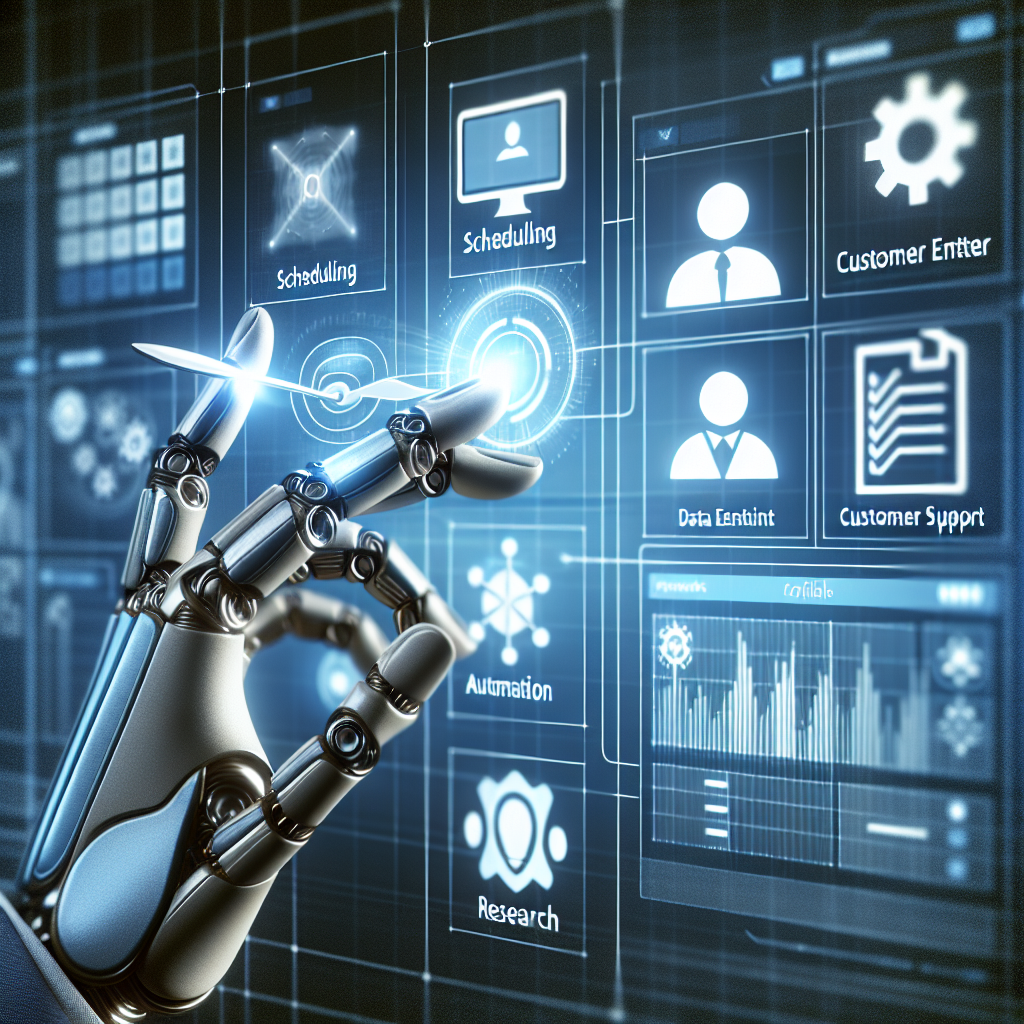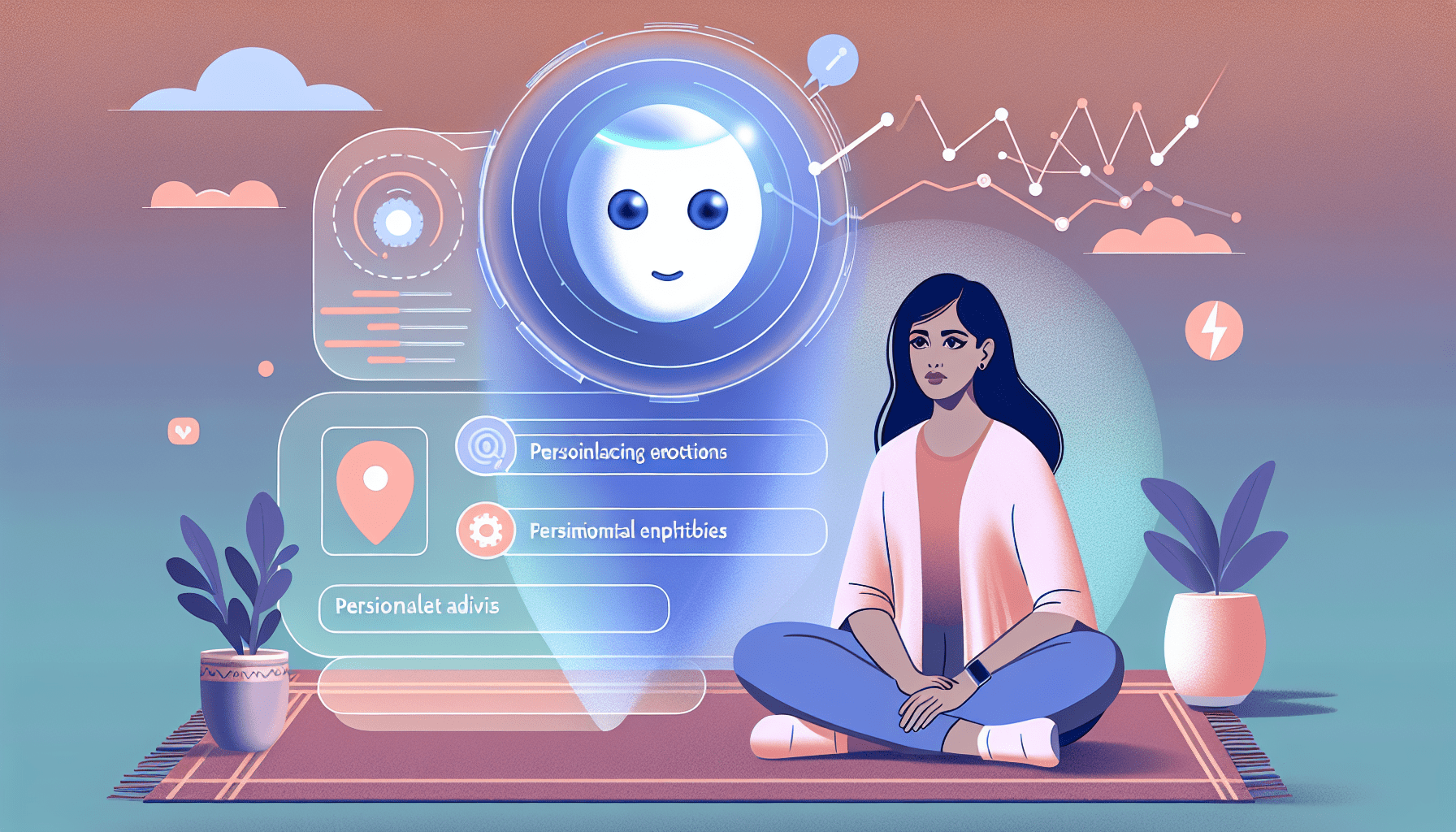If you’re curious about the role virtual assistants play in business process automation, you’ve come to the right place. With their ability to streamline tasks and handle repetitive processes, virtual assistants have become an integral part of modern businesses. In this article, we’ll explore the ways in which virtual assistants contribute to business process automation, offering insights into how they can enhance productivity, improve efficiency, and ultimately drive success. So, let’s dive in and discover the benefits virtual assistants bring to the table.
Defining Virtual Assistants
Virtual Assistants are AI-powered applications or software that are designed to automate and assist with various tasks and processes in business environments. They are virtual entities programmed to simulate human-like interactions and perform tasks with minimal human intervention. These assistants can be accessed through various devices such as smartphones, computers, or smart speakers, making them easily accessible and highly versatile.
Understanding the concept of Virtual Assistants
Virtual Assistants are designed to understand and respond to natural language commands or queries. They utilize technologies such as Natural Language Processing (NLP) and Machine Learning (ML) to interpret and analyze user input, which enables them to provide relevant and accurate responses or perform requested actions. The goal of Virtual Assistants is to simplify and streamline complex business processes, saving time and resources for companies.
Different types of Virtual Assistants
There are various types of Virtual Assistants available today, each tailored to cater to specific business needs. Here are some common types:
-
Personal Virtual Assistants: These are consumer-focused Virtual Assistants such as Siri, Google Assistant, or Alexa. While they primarily serve individual users, they can also be utilized for personal or small-scale business tasks.
-
Enterprise Virtual Assistants: Designed for larger-scale businesses, these Virtual Assistants assist in automating complex tasks and processes specific to corporate environments. They often integrate with existing software systems and databases to streamline operations.
-
Chatbots: Chatbots are Virtual Assistants that are primarily utilized for customer support and service. They can engage in conversations with customers, provide information, answer queries, and even handle simple tasks or transactions.
-
Voice Assistants: Voice Assistants are Virtual Assistants that utilize voice recognition technology to interact with users. They are commonly found in smart speakers or voice-enabled devices.
Benefits of Business Process Automation
Business Process Automation (BPA) is the use of technology to automate repetitive tasks or processes in an organization. When combined with Virtual Assistants, BPA offers numerous benefits that can significantly improve operational efficiency, productivity, and overall business performance.
Increasing efficiency and productivity
By automating repetitive tasks and processes, Virtual Assistants free up valuable time for employees to focus on more strategic and value-added activities. They can handle tasks such as data entry, appointment scheduling, or email management, reducing the manual workload for employees and allowing them to focus on higher-level tasks that require human judgment and creativity.

Reducing human errors
Virtual Assistants are programmed to follow predefined rules and guidelines, ensuring accuracy and consistency in task execution. Unlike humans, they do not get tired, bored, or distracted, minimizing the chances of errors and inaccuracies. By reducing human errors, businesses can improve the quality of their services or products and maintain a higher level of customer satisfaction.
Improving customer satisfaction
Virtual Assistants can be employed in customer support functions, enabling businesses to offer 24/7 assistance and support. They can handle customer inquiries, provide personalized experiences, and even resolve common issues autonomously. By providing timely and accurate support, Virtual Assistants contribute to enhanced customer satisfaction and loyalty.
Enhancing scalability and flexibility
One of the key advantages of Virtual Assistants in the context of business process automation is their ability to handle multiple tasks simultaneously and seamlessly scale up or down based on demand. Whether it’s handling a high volume of customer inquiries or processing a large number of invoices, Virtual Assistants can adapt to changing business needs quickly and efficiently.
Overview of Business Process Automation
Business Process Automation (BPA) involves the use of technology to automate and streamline repetitive manual tasks or processes within an organization. The primary purpose of BPA is to improve efficiency, reduce costs, and enhance overall productivity. Virtual Assistants play a crucial role in enabling and facilitating BPA initiatives by automating various tasks and processes.

Definition and purpose
Business Process Automation refers to the use of technology to automate repetitive tasks, workflows, or entire processes within an organization. The main purpose of BPA is to streamline operations, reduce manual effort, eliminate errors, and improve overall efficiency. By automating routine tasks, employees can focus on more strategic and value-added activities, leading to increased productivity and innovation.
Key components of business process automation
Successful implementation of BPA requires the integration of various components and technologies. Some key components of BPA include:
-
Process Mapping: Identifying and mapping out the steps involved in a specific process to understand its flow and potential areas for automation.
-
Workflow Automation: Utilizing software tools to automate the execution of tasks, both sequentially and in parallel, within a predefined workflow.
-
Data Integration: Ensuring seamless integration of data from multiple systems or databases to facilitate automated data processing and analysis.
-
Rule-Based Engines: Defining business rules and logic that Virtual Assistants can follow to determine appropriate actions and responses.
-
Reporting and Analytics: Implementing systems that provide real-time monitoring, reporting, and analysis of automated processes, allowing businesses to track performance and identify areas for further improvement.
Commonly automated business processes
Numerous business processes can be automated using Virtual Assistants and BPA technologies. Some commonly automated processes include:
- Data entry and management
- Appointment scheduling and reminders
- Email and communication management
- Customer support and ticketing
- Lead generation and qualification
- Invoicing and payment processing
- Recruitment and onboarding
- Expense tracking and reporting
By automating these processes, businesses can achieve significant time and cost savings, improve accuracy, and enhance overall operational efficiency.
Introduction to Virtual Assistants in Business Process Automation
Virtual Assistants play a crucial role in automating and streamlining various tasks and processes within organizations. By leveraging technologies such as Artificial Intelligence (AI), Natural Language Processing (NLP), and Machine Learning (ML), Virtual Assistants enable businesses to automate mundane and repetitive tasks, improve accuracy, and enhance overall productivity.

Understanding the role of Virtual Assistants in automating processes
Virtual Assistants serve as the interface between users and automated processes. They understand natural language commands or queries and perform tasks based on predefined rules and logic. By interacting with Virtual Assistants, users can initiate or request the execution of specific tasks, such as data entry, appointment scheduling, or customer support.
Virtual Assistants utilize technologies like NLP and ML to interpret and analyze user input, enabling them to understand the context, intent, and desired outcome. They then execute the appropriate actions or provide relevant information using a combination of pre-programmed rules and real-time data analysis.
Advantages of using Virtual Assistants for automation
Utilizing Virtual Assistants for automation offers several advantages for businesses:
-
Improved Efficiency: Virtual Assistants automate time-consuming and repetitive tasks, enabling employees to focus on strategic activities that require human skills and expertise. This leads to increased productivity and overall operational efficiency.
-
Greater Accuracy: Virtual Assistants follow predefined rules and logic, minimizing the chances of errors or inconsistencies. They execute tasks consistently and accurately, ensuring a high level of quality and reliability.
-
Enhanced User Experience: Virtual Assistants provide a seamless and user-friendly interface for interacting with automated processes. They understand natural language commands, making it easier for users to initiate tasks or obtain information without the need for extensive training or technical knowledge.
-
Cost Savings: By automating tasks that would otherwise require manual effort, businesses can significantly reduce labor costs and free up resources for more critical activities. Virtual Assistants eliminate the need for additional staff or outsourcing, resulting in substantial cost savings over time.
-
Scalability: Virtual Assistants can handle multiple tasks simultaneously and scale up or down based on demand. This flexibility allows businesses to adjust their automation resources in real-time, ensuring optimal performance and cost-effectiveness.
In summary, Virtual Assistants offer a powerful solution for automating processes within organizations. Their ability to understand natural language, execute tasks accurately and efficiently, and provide a seamless user experience make them an invaluable asset for business process automation.
Virtual Assistants for Administrative Tasks
Virtual Assistants can streamline various administrative tasks, improving efficiency and reducing manual effort. By automating tasks such as data entry, appointment scheduling, and email management, businesses can free up valuable time and resources for more critical activities.
Automating data entry and management
Data entry is often a time-consuming and repetitive task that can be prone to errors when performed manually. Virtual Assistants can automate data entry processes by extracting relevant information from various sources and populating databases or spreadsheets automatically. This not only saves time but also ensures greater accuracy and consistency in data management.
Virtual Assistants can also handle data management tasks such as organizing and categorizing information, generating reports, or updating records. By automating these tasks, businesses can maintain better data accuracy, improve data accessibility, and enhance decision-making processes.

Scheduling and organizing appointments
Appointment scheduling and coordination can be a challenging task, especially when dealing with multiple individuals or teams. Virtual Assistants can automate this process by synchronizing calendars, sending meeting requests, and managing reminders. They can handle the back-and-forth communication required for scheduling to minimize the need for manual intervention.
With Virtual Assistants managing appointment scheduling, businesses can avoid double bookings, reduce scheduling conflicts, and ensure that meetings are organized efficiently. This saves time for both employees and clients, improving overall productivity and customer satisfaction.
Handling email and communication management
Managing large volumes of emails and communication can be overwhelming for businesses. Virtual Assistants can assist with email management by filtering and prioritizing messages, drafting responses, or categorizing emails based on predefined rules. By automating email management, Virtual Assistants can help employees stay organized, reduce response times, and ensure that important messages are not overlooked.
Virtual Assistants can also interact with customers or clients via chat or messaging services, answering frequently asked questions, providing information, or guiding users to appropriate resources. This automation of communication management frees up valuable resources and allows employees to focus on more complex or critical interactions, improving overall customer service and satisfaction.
Virtual Assistants for Customer Support
Virtual Assistants play a vital role in automating and enhancing customer support processes. By leveraging AI technologies, they can provide timely and personalized assistance, manage customer inquiries, and resolve common issues autonomously.
Automating live chat and messaging services
Many businesses rely on live chat or messaging services to provide real-time customer support. Virtual Assistants can automate these services by engaging in conversations with customers, answering frequently asked questions, providing product information, or guiding users through troubleshooting processes.
By automating live chat and messaging services, Virtual Assistants ensure 24/7 availability, reduce wait times, and provide consistent and accurate responses. This improves customer satisfaction and allows businesses to handle a higher volume of inquiries efficiently.

Managing customer inquiries and issue resolution
Virtual Assistants can handle a wide range of customer inquiries, ranging from basic queries to more complex issues. By utilizing AI technologies, they can understand customer intent, analyze available data, and provide relevant information or solutions.
Virtual Assistants can access databases, knowledge bases, or FAQs to retrieve information quickly and accurately. They can guide customers through self-service options or escalate issues to human agents when necessary. By automating customer inquiry management, Virtual Assistants improve response times, reduce the need for human intervention, and ensure consistent and accurate support.
Delivering personalized customer experiences
Virtual Assistants can be programmed to provide personalized customer experiences by analyzing customer data and preferences. They can make product suggestions, offer tailored recommendations, or provide targeted promotions based on individual customer profiles.
By delivering personalized experiences, Virtual Assistants enhance customer engagement, loyalty, and satisfaction. They create a more personalized and human-like interaction, which can significantly impact customer perception and their overall experience with the business.
Virtual Assistants for Sales and Marketing
Virtual Assistants can play a crucial role in automating sales and marketing processes. By assisting with lead generation, personalized marketing campaigns, and providing sales support, they contribute to increased efficiency and effectiveness in these areas.
Automating lead generation and qualification
Virtual Assistants can automate the process of generating and qualifying leads by utilizing AI technologies and data analysis. They can gather information from various sources, such as websites, social media, or CRM systems, to identify potential leads based on predefined criteria.
By automating lead generation, Virtual Assistants save time and effort for sales teams, allowing them to focus on leads with a higher probability of conversion. They can also assist in lead qualification by analyzing customer data, scoring leads based on predefined criteria, and identifying the most promising opportunities.
Assisting with personalized marketing campaigns
Virtual Assistants can support marketing teams by automating personalized marketing campaigns. By leveraging customer data and preferences, they can create targeted and customized communication materials, such as emails, newsletters, or promotional messages.
Virtual Assistants can analyze customer interactions and behavior to determine the most effective communication channels, timing, and content for each individual. By automating personalized marketing campaigns, businesses can improve customer engagement, conversion rates, and overall marketing ROI.
Providing sales support and analytics
Virtual Assistants can assist sales teams by providing real-time data and analytics related to sales performance, customer behavior, or market trends. They can generate reports, provide sales forecasts, or identify upselling or cross-selling opportunities.
By automating sales support and analytics, Virtual Assistants enable sales teams to make data-driven decisions, optimize their strategies, and enhance overall sales effectiveness. They provide valuable insights and recommendations, improving sales performance and revenue generation.
Virtual Assistants for Human Resources
Virtual Assistants can automate and streamline various human resources processes, from recruitment and onboarding to employee training and performance management. By leveraging AI technologies, they simplify processes, reduce manual effort, and enhance overall efficiency.
Automating recruitment and onboarding processes
Recruitment and onboarding processes can be time-consuming and resource-intensive. Virtual Assistants can automate these processes by screening resumes, scheduling interviews, conducting initial assessments, and even generating offer letters.
By automating recruitment and onboarding, Virtual Assistants ensure consistency, reduce bias, and save time for HR professionals. They streamline administrative tasks, allowing HR teams to focus on building relationships with candidates and making informed hiring decisions.
Assisting with employee training and development
Virtual Assistants can support employee training and development by providing on-demand access to training materials, resources, or job aids. They can deliver personalized learning experiences by understanding individual employee skill gaps and recommending relevant training modules or programs.
By automating employee training and development, Virtual Assistants enable self-paced learning, reduce training costs, and ensure consistent delivery of training materials. They empower employees to take ownership of their learning journeys and acquire new skills more efficiently.
Streamlining performance evaluation and management
Virtual Assistants can automate performance evaluation processes by collecting and analyzing performance data, tracking goals and milestones, and providing real-time feedback and guidance. They can generate performance reports, identify areas for improvement, and facilitate performance discussions between managers and employees.
By automating performance evaluation and management, Virtual Assistants ensure fairness, transparency, and consistency in the process. They provide objective insights, reduce bias, and enable timely feedback and coaching, contributing to continuous improvement and employee development.
Virtual Assistants for Finance and Accounting
Virtual Assistants can streamline various finance and accounting processes, improving efficiency, accuracy, and overall financial management. From invoice processing and payment to expense tracking and financial analysis, they automate tasks that are traditionally time-consuming and prone to human error.
Automating invoice processing and payment
Virtual Assistants can automate the processing and payment of invoices by extracting relevant data, verifying information, and initiating payment transactions. They can integrate with financial systems, such as ERP or accounting software, to streamline the end-to-end invoice management process.
By automating invoice processing and payment, Virtual Assistants eliminate manual data entry, reduce processing time, and improve accuracy. They ensure that invoices are processed on time, payments are made promptly, and financial records are updated accurately.
Managing expense tracking and reporting
Virtual Assistants can assist in managing expense tracking and reporting by capturing expense data, categorizing expenses, and generating expense reports. They can integrate with expense management systems or financial software to streamline the process and ensure accurate record-keeping.
By automating expense tracking and reporting, Virtual Assistants reduce the manual effort required to process and reconcile expenses. They enhance compliance, improve visibility into spending patterns, and facilitate timely financial reporting and analysis.
Assisting with financial analysis and forecasting
Virtual Assistants can provide real-time financial analysis and forecasting by analyzing financial data, identifying trends, and generating reports or projections. They can integrate with financial systems and utilize advanced analytics tools to generate insights and recommendations.
By automating financial analysis and forecasting, Virtual Assistants enable faster and more accurate decision-making. They provide actionable insights, highlight potential risks or opportunities, and enhance financial planning and strategic decision-making processes.
Future Trends and Innovations in Virtual Assistants for Automation
Virtual Assistants for automation are continually evolving as technology advances and new innovations emerge. Here are some future trends and innovations to look out for:
Advancements in natural language processing and machine learning
As AI technologies like Natural Language Processing (NLP) and Machine Learning (ML) continue to advance, Virtual Assistants will become more intuitive, accurate, and capable of understanding complex user commands or queries. They will be able to identify user intent more accurately, provide more personalized interactions, and adapt to varying contexts or situations.
Integration with Internet of Things (IoT) devices
Virtual Assistants will increasingly integrate with Internet of Things (IoT) devices, allowing for seamless control and automation of various devices and systems. For example, Virtual Assistants can manage smart homes or offices, adjusting temperature settings, controlling lighting, or even ordering supplies based on predefined rules or user preferences.
Potential impact of chatbots and voice assistants
Chatbots and voice assistants are gaining popularity in various industries, including customer service and support. As their capabilities continue to improve, Virtual Assistants will be able to handle more sophisticated conversations, provide more accurate responses, and even exhibit emotions or empathy in their interactions with users.
In conclusion, Virtual Assistants are revolutionizing the way businesses automate tasks and streamline processes. They offer numerous benefits, including increased efficiency, reduced errors, improved customer satisfaction, and enhanced scalability. As technology continues to advance, Virtual Assistants will play an even more significant role in business process automation, driving innovation and transforming the way we work.




